History
Regarding the body shape, bracing system, and decorative designs of musical instruments, all manufacturers have been directly or indirectly influenced by the designs of Christian Frederik Martin (1796 – 1873). During the 1920s and 1930s, the Martin company introduced many significant innovations in design and construction. To withstand the high tension of steel strings, the bracing system was further reinforced on both the body and the guitar’s top. In a typical acoustic guitar, the body usually starts from the 14th fret.
Another innovative designer was Orville Gibson, who crafted guitars with arched tops (archtop guitars) in the 19th century. Orville Gibson founded the Gibson company in 1902 in Kalamazoo, Michigan, USA. For decades, the Gibson company was the leading guitar manufacturer with arched tops. The original model with an arched top later evolved into the jazz guitar (e.g., L5 and Super 400).
Differences Between Acoustic and Classical Guitars
Strings
In an acoustic guitar, the metal strings are a fundamental characteristic that shapes the sound. In contrast to the classical guitar, which has 3 wound metal strings and 3 plastic (nylon) strings, the acoustic guitar has only metal strings. This makes it sound louder with a clear and penetrating tone compared to a classical guitar, which is undoubtedly a quieter instrument. There are various gauges (thickness) of metal strings depending on how you play and the sound you desire. Certainly, a set of metal strings with a smaller gauge (thinner thickness) has a softer feel in playing but may lag slightly in volume. It should also be noted that metal strings have higher tension, resulting in a harder playing feel compared to a classical guitar, which is softer due to the plastic strings it uses. A question we often receive is whether you can put acoustic guitar strings—metal ones—on a classical guitar. The answer is, of course, no, as a classical guitar is not built to withstand the higher tension of metal strings.
Headstock
Unlike classical guitars, acoustic guitars usually have a closed headstock. However, there are also models with an “open” headstock, the so-called parlour or small-bodied guitars, which excel in blues as well as in the Greek rebetiko music scene.
Fingerboard
The fingerboard of an acoustic guitar features distinct inlay patterns (usually at the 3rd, 5th, 7th, 9th, 12th, 15th, and 17th frets) that serve as markers. Additionally, small dots on the side of the fingerboard enhance precision during position changes. Classical guitars usually do not have these markers on the fingerboard.
Moreover, the fingerboard of an acoustic guitar is narrower. The width at the upper nut of an acoustic guitar is approximately 4.3 centimeters, while on the fingerboard of a classical guitar, it is about 5 centimeters. This difference in string spacing may cause unwanted contact with adjacent strings and requires more effort to play barre chords. This certainly demands more practice!
Neck and Setup
Let’s talk about the neck of an acoustic guitar. Internally, it usually has a metal rod called a “truss rod.” This rod has a significant role: it keeps the thin neck stable because the metal strings exert a considerable tension/pressure on it. This rod also allows you to adjust the curvature of the neck, something that is extremely important and is directly related to how playable an instrument is. This adjustment can be made by adjusting the truss rod, but only by our specialized staff to avoid causing any damage. Never attempt to make any adjustments without knowing the setup process of an instrument. Our company has the specialized personnel you need to set up your guitar according to your needs and playing style.
Guitar setup is a complex process that requires specialized knowledge and varies not only from guitar to guitar but also from guitarist to guitarist as it tailors the instrument to your specifications. So, if you ever need to make some adjustments to the neck of the instrument, you can turn to our company. We will be happy to assist you and customize your guitar to your needs.
Playing Techniques
The narrower neck of an acoustic guitar can be a bit more demanding for beginners who are accustomed to the wider neck of a classical guitar. As we play higher on the neck, the fretboard widens, making things easier. However, the narrow neck of an acoustic guitar has some advantages. Many rock guitarists like Eric Clapton and Jimmy Page prefer playing acoustic guitars because their narrower neck allows them to frequently use the thumb of the left hand to play or mute notes on the low strings compared to a classical guitar with a wider neck. For this reason, playing many rock and pop songs on an acoustic guitar is often much easier than on a classical guitar. We can say that an acoustic guitar is certainly a more modern instrument.
An acoustic guitar is usually played in a seated or standing position using a guitar strap. This provides flexibility and more style. On the other hand, a classical guitar is usually played in a seated position. That’s why classical guitars usually don’t have a guitar strap button. It’s all about finding the style that suits you best!
Why Choose an Acoustic Guitar?
If you’re a musician who wants to be extremely versatile in many styles, having different types of guitars like an acoustic or electro-acoustic guitar, a classical, or an electric is the right way to achieve that. However, for beginners with many interests, starting with one instrument as they explore various musical genres is crucial. It’s essential to understand the stylistic possibilities offered by different types.
If your style is significantly influenced by the skill and technique of the electric guitar, then attempting to rock with a classical guitar may not satisfy you. The distortion in the sound of an electric guitar cannot be properly developed on the “slow” nylon strings of a classical guitar. Let’s not forget the characteristic playing techniques of the electric guitar, such as bend-ups, slides, hammer-ons, pull-offs, tapping, which are quite challenging to reproduce on a classical guitar. Additionally, the body of a classical guitar, starting from the 12th fret, limits you from reaching the higher notes when trying to play fast. To make things worse, classical guitars usually have only 18 to 19 frets, further limiting your range.
On the other hand, you can’t really achieve the distorted rock sound from an acoustic guitar. However, for beginners with many interests, the acoustic guitar provides a stable platform to experiment with rock and blues elements. You can get quite close to the rock sound with a set of thin strings (010’ gauge) on an acoustic guitar. These thin strings are more flexible during bend-ups and hammer-ons compared to the “slow” nylon strings of a classical guitar. And if you want easy access to the high frets, you can even get an acoustic guitar with a cutaway design. The cutaway design offers easier access to the higher frets and more space for playing. You can easily learn melodies with a pick, simple riffs, and nice licks on an acoustic guitar.
Sound
The acoustic guitar has 6 metal strings. These provide a stable, vibrant, and bright sound, regardless of their thickness. Of course, the thicker the string set, the greater the volume of sound, but at the same time, playing becomes harder. When playing in a band, the acoustic guitar adds that necessary sparkle to the high frequencies, making the overall sound rich and full. Even when playing alone, whether recording or performing, these strings offer a powerful sound that will impress you! They also provide strength in the low and mid frequencies.
When it comes to solo playing, most musicians prefer thicker strings to get a fuller and more powerful sound. But when playing with a band, you may want to choose softer – thinner strings. If you plan to perform on stage, it’s a good idea to upgrade your acoustic guitar with a pickup system or get an acoustic-electric guitar that allows you to connect your guitar to a professional sound system. You can also choose between a flat and a curved top. The curved top not only adds stability to the instrument but also helps enhance its intensity. Models with a curved top are generally more expensive compared to models with a flat top.
The Guitar Body
The type and quality of wood used in the construction of the body of an acoustic guitar have a significant impact on its sound. The top, which is the part of the instrument that brings the sound to life, is usually made of spruce wood, split into two symmetrical parts. In the past, rosewood was fashionable for the sides and back, but today, mahogany has become the preferred choice, although you can still find guitars with sides and back made of sapele if that’s what you’re looking for. Mahogany is also used for the neck and headstock, while ebony is often used for the fretboard and the bridge of the instrument. Even laminated wood can satisfy the most demanding ears. However, today, you can really find affordable guitars with genuine spruce tops! Remember, wood alone is not a guarantee of a quality sound. The entire construction of the instrument contributes to this.
Now, let’s talk about the body shape. In acoustic guitars, there is no one body style that fits everyone. It’s a battle of shapes – Jumbo, Dreadnought, Western Style, Grand Auditorium, Parlor. New body shapes are constantly emerging! For example, the Dreadnought shape has that transparent, vocal sound with rich, powerful low frequencies, ideal for solo pieces! On the other hand, the Jumbo highlights the lower frequencies in a more refined way, with additional emphasis on the mid frequencies. If you play in a band, you may lean towards a guitar with a smaller body and a cutaway for those high-fret action moments. Even the finish of the guitar plays a role in the sound. A glossy finish that is resistant to humidity and perhaps more visually striking gives the instrument a tighter and brighter sound, as opposed to a matte finish that makes the sound warmer and more earthy.
Woods in Construction
The choice of wood is crucial to the sound of an acoustic guitar. In most cases, the natural beauty of wood, with its distinctive patterns, is a feature in the design of each acoustic guitar. Instead of covering with a color, some surfaces are simply oiled or waxed, allowing the character of the wood to shine through. Some models may also feature a transparent lacquer layer. Spruce, mahogany, rosewood, maple, and walnut are some of the most popular types of wood used in the construction of an acoustic guitar. Beyond appearance, each wood type uniquely contributes to the sonic characteristics of each instrument, shaping its sound. To help you understand the tonal characteristics of each wood, let’s examine the most important woods and their corresponding sonic characteristics:
Maple
Maple, with its transparent and clear sound characterized by delicate high and low harmonics, is highly valued in various aspects of luthiery. Its strength makes it a top choice for constructing necks. In electric guitars, maple tops are preferred for their ability to provide necessary sonic projection. In the world of acoustic guitars, it is often used in the top, contributing to a clear and bright tone.

Birch
Birch is now rarely used in modern guitar construction. It was popular in the early part of the last century when manufacturers used this wood as a base for constructing the sides and back of acoustic guitars.
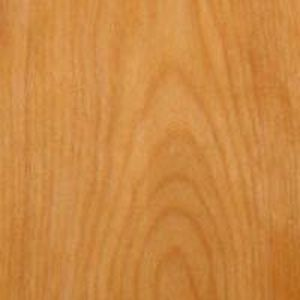
Cocobolo
Cocobolo is a type of wood that originates from Central America. It provides a sound similar to the legendary Brazilian rosewood and has steadily gained popularity in lutherie.
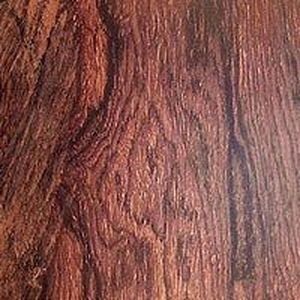
Ebony
Ebony is a very hard, durable, and dense wood with high density, primarily used for the fretboard and the instrument’s binding.

Makassar Ebony
Makassar Ebony is one of the most expensive woods in lutherie. It is often used in the construction of the instrument’s fretboard. In pricier acoustic and jazz guitars, it is also utilized in making the binding.
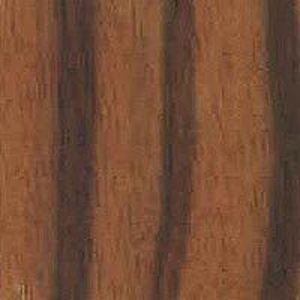
Oak
Oak is rarely used in modern guitar construction. It was famous in the early part of the last century when guitar makers utilized this durable wood for the construction of the sides and back of acoustic guitars.
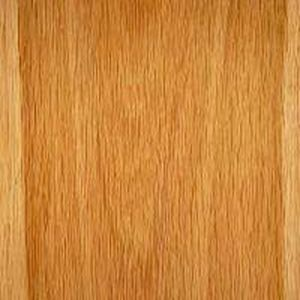
Spruce
Spruce is the top choice for the soundboard (top) of an acoustic guitar. It imparts a warm, open, and powerful sound. The most well-known types are Sitka Spruce, high-quality Engelmann Spruce, and Adirondack Spruce (Appalachian Spruce). Spruce wood from high-altitude regions is usually harder and stiffer.
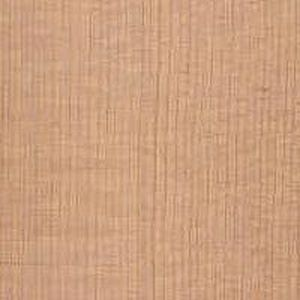
Cedar
Cedar is softer and more flexible wood compared to spruce, producing a warm sound with high resonance and quick response, making it ideal for classical and acoustic guitars. Since cedar is a relatively soft wood, ensuring the stability of the soundboard thickness is essential. It has a somewhat harder, thicker, powerful, and more direct sound compared to spruce. Unlike spruce, it requires almost no breaking in for a short playing time (approximately 100 hours) as it produces a fully developed sound. It is player-friendly because it can reproduce good tonal qualities even without much force. On the other hand, its dynamic tonal character and lifespan (around 70 years) are lower due to its structure.
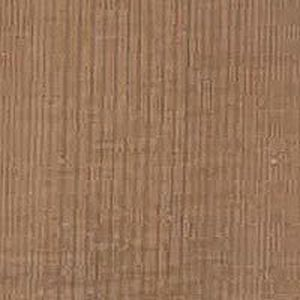
Koa
Koa comes from Hawaii and is known for its highly pronounced wood grain patterns. Initially, Koa was exclusively used for building ukuleles and Hawaiian guitars. However, during the 20th century, more and more American guitar makers discovered the advantages of this exceptional material. Koa produces a very clear, transparent sound with pronounced midrange and high-frequency tones.
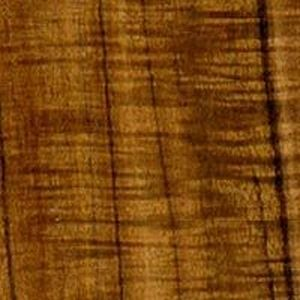
Mahogany
One of the most popular and versatile woods in guitar construction. It provides a rich, sustained, warm, and balanced sound with distinct highs and good harmonics.
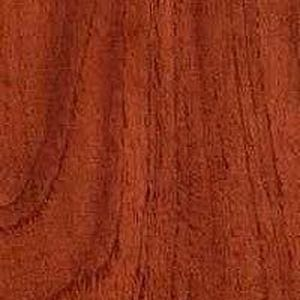
Nato / Mahogany Species
Nato is a mahogany species that shares similar properties with its more well-known relative.
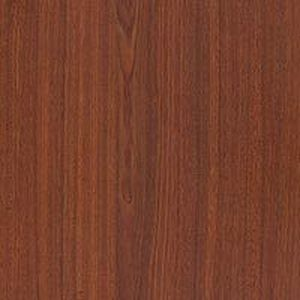
Rosewood
Like ebony, rosewood has a high density and strength. Its durability makes it particularly suitable for constructing the fingerboard and bridge of acoustic guitars. The tonal properties of rosewood are of very high quality when used in the sides and back of the instrument, providing strong bass and clear harmonics. There are different species used in lutherie, with the most dominant being Indian and Brazilian rosewood.

Walnut
Walnut has gradually gained considerable popularity in guitar construction in recent years. The wood features an attractive color tone and provides a well-balanced sound, with distinct bass, pronounced midrange, and pleasant highs.

Dreadnought Guitars
For 150 years, Martin’s flattop acoustic guitars have been among the best in the world. All manufacturers have been influenced by the designs of Christian Frederik Martin. This applies to both the body shape and bracing, as well as the decoration with beautiful designs. The Dreadnought is one of the most famous models and got its name from a British battleship (the largest in the world at the time). The guitar was designed in 1916 by Frank Henry Martin and Harry Hunt. Thanks to its relatively large body compared to other acoustic models, Dreadnoughts delivered a powerful, full sound and quickly became very popular. The most famous Martin Dreadnought models are the D-18 and D-28. The Dreadnought is truly the most versatile model in the acoustic guitar world.
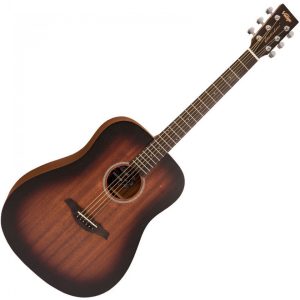
Jumbo Guitars
Also known as Super Jumbo 200, SJ-200, or simply J-200 – the top flat-top acoustic guitar from Gibson. This model has won the hearts of many music legends such as Elvis Presley, Bob Dylan, Ron Wood, Emmylou Harris, Rick Nelson, and many others, with its crystalline and perfectly balanced sound. Jumbo guitars offer a distinct, transparent sound profile with plenty of bass, strong midrange, and bright trebles. With a jumbo guitar in your hands, you won’t need to hide behind any other instrument. Depending on the construction woods, the bass can be so pronounced that fingerpicking may sound less defined. However, good jumbos also excel in fingerpicking in blues and folk music.
Undoubtedly, these large-bodied guitars are often preferred by singers and songwriters, especially when it comes to intense strumming of chords. Think of artists like Sheryl Crow or Emmylou Harris. Jumbo guitars have the incredible ability to project the sound loudly and clearly, making them ideal for accompanying vocals in songs.
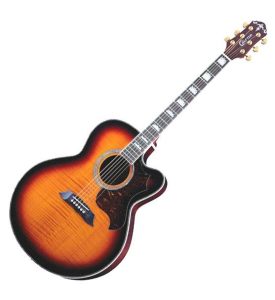
Parlour Guitars
Like the dreadnought, parlour-type acoustic guitars were initially developed and built by Martin and later adopted as standards by many other manufacturers, such as Vintage. These guitars had a width of about 34.4 centimeters and a length of about 48.5 centimeters, making them relatively small compared to today’s standards. However, in the 1920s and 1930s, these instruments became very popular and were available from many manufacturers. Today, very few companies produce parlour-sized guitars. Their sound, very clean and without much resonance, is highly desirable for blues musicians and for Greek rebetiko music, known as “ochtarakia” or rebet guitars. It is emphasized that the volume of the instrument is not the main factor here, allowing these “smaller” guitars to optimally showcase their tonal advantages and distinctive sound.
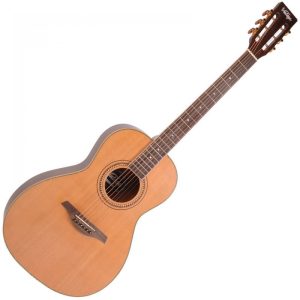
Auditorium Guitars
These guitars, also known as “Triple 0,” have a body width of approximately 40 centimeters and represent an ideal compromise between volume, sound intensity, and playability comfort. It’s no surprise that Eric Clapton values the Martin 000 above all and uses the guitar both in the studio and on stage. Therefore, it’s not surprising that the 000 has been used as inspiration for many modern instruments. With a smaller body, extremely user-friendly (especially suitable for guitarists with small hands due to the shorter scale length), and an absolutely precise tone, it is the perfect instrument for comfortable fingerpicking and solo playing.
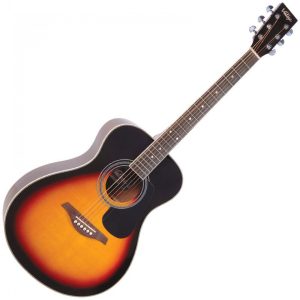
Roundback Guitars
These electro-acoustic guitars feature a rounded back made of composite materials. The design with a rounded back became the trademark of the Ovation company, but it was followed by many other manufacturers, including a Korean-based company, Crafter. These guitars essentially had the same dimensions as regular acoustic guitars but with a slightly thinner body. The “mid-depth” variation had the volume of a dreadnought, while the “deep bowl” was even fuller. Often, the top is made of spruce with various variations such as tiger maple, quilted maple, etc., and they are equipped with a piezo-electric system under the saddle of the fretboard.
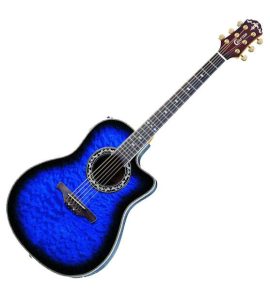
The 12-String Guitar
A special variation of the acoustic guitar is the 12-string acoustic guitar. Here, the strings are paired together and fretted simultaneously with one finger, giving the instrument a rich and full sound. It is the ideal choice for someone seeking a more comprehensive sound in chord accompaniment. The four lower strings (E, A, D, G) are tuned in octaves with their corresponding higher-pitched octave strings. The two upper “courses” (B, E) are supported by strings tuned to the same pitch. However, playing challenging solo pieces on the 12-string guitar is a real challenge, something that few guitarists have been able to demonstrate, with unique exceptions like Jimi Hendrix in the famous video with the white background where he skillfully plays a 12-string acoustic guitar, and also Stevie Ray Vaughan in MTV Unplugged.
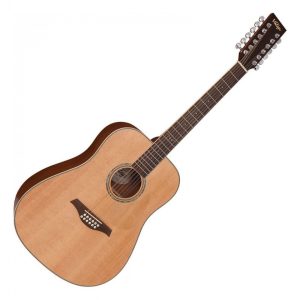
Electro-Acoustic Guitars
Let’s make the distinction clear: an electro-acoustic guitar is designed to sound like an acoustic guitar when its signal is amplified. Most function as fully functional acoustic guitars when not connected to an amplifier or sound system.
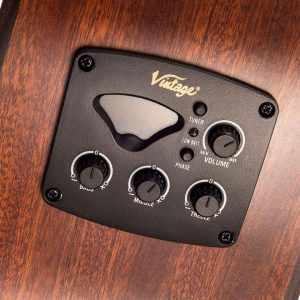
Until the 1960s, acoustic guitarists had to sit or stand in front of one or more microphones to achieve amplification through a PA sound system. This remains the preferred choice for studio recording, but today, most players use electro-acoustic guitars for their live performances. Some early electro-acoustic guitars used pickups mounted on the front soundhole of the instrument, but they couldn’t faithfully reproduce their acoustic sound. The modern version is the piezoelectric transducer, where a crystal or ceramic material converts the vibrations it receives into electrical current. Most piezoelectric transducers take the form of a thin strip placed under the saddle of the bridge, ensuring effective transfer of the vibrations produced by the strings. Piezoelectric transducers capture the acoustic sound better than pickups, although much still needs to be done for the perfect result.
Cleaners - Maintenance
Today, there is a wide range of products available for the proper maintenance and cleaning of guitars. Depending on the area and the type of surface you want to clean, there is a corresponding product. For example, if you want to revive the color of your dark wood fretboard – usually rosewood – then the suitable cleaning fluid is lemon oil (*not suitable for light-colored woods like maple). If you desire to restore the original gloss to the body of the guitar, then the guitar cleaner/polish to use is the DUNLOP 65 Formula. A minimal amount on a cleaning cloth can work wonders, removing dirt or fingerprints, restoring the original shine to polished surfaces. Another popular product is string cleaner. Use DUNLOP 6582 Ultraglide string cleaner to maintain your string set always fresh, extending their lifespan with a simple application after each use. The cleaner features a special applicator surface to deposit only the necessary amount while preventing it from drying out at the same time.

Conclusion
If you’re just starting out and love exploring different and more modern music styles, buying an acoustic guitar is the best choice for you. The steel strings might be a bit tough on your fingers at first, but that’s something all guitarists go through. As a beginner, you should focus on an instrument that will bring you joy during the learning process. So, if you enjoy rock music, there’s no need to struggle with classical pieces on a classical guitar. The acoustic guitar is the companion’s guitar. You can take it anywhere and play while singing along.
As a general rule, for beginners, it’s a good idea to start their musical journey with a “good” quality instrument. Student-category acoustic guitars range from about 90 euros to 300 euros. A good instrument usually aids learning because it’s generally easier to play. Cheaper instruments might hinder your progress rather than help you develop your musicality.
Investing in an affordable but suitable instrument is entirely worth it. Good guitars can retain their value even after many years and sometimes become valuable investments. In contrast, cheap toys will eventually end up in the trash. Moreover, if you decide to upgrade to a more expensive guitar in the future, you’ll still have an instrument for vacations and beach parties without any regrets. However, if you want your new fantastic acoustic guitar to remain safe and undamaged, invest in a padded acoustic guitar case or, even better, a hardshell acoustic guitar case for a safer and more comfortable transport!



